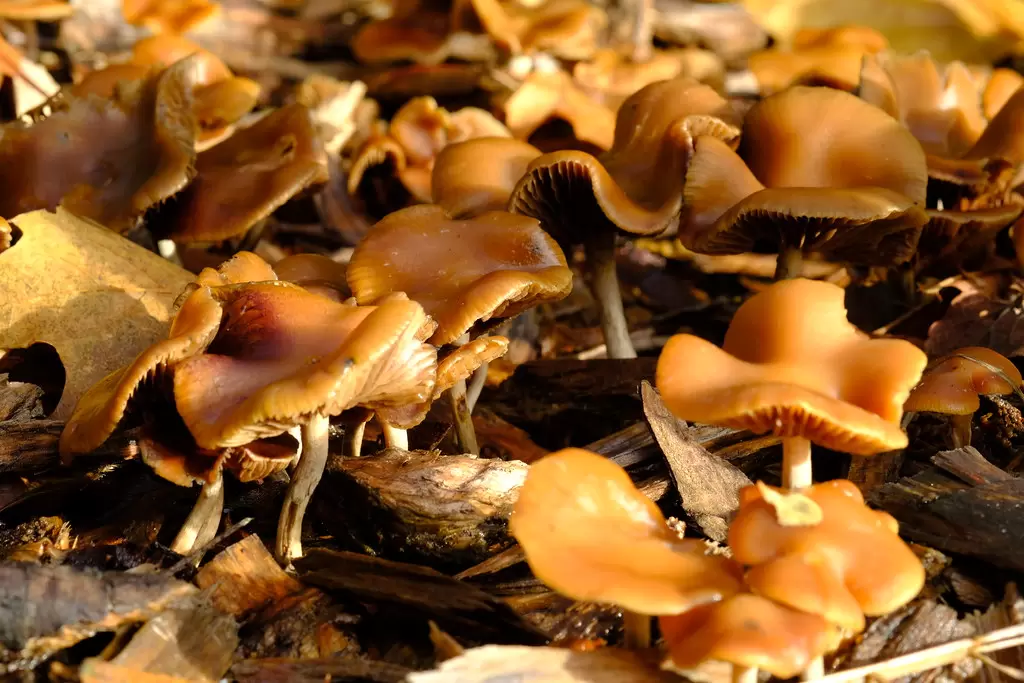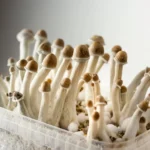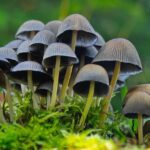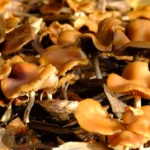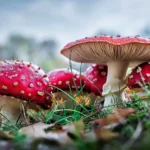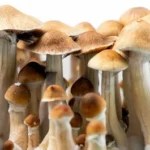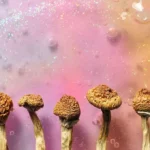Have you ever come across the fascinating Psilocybe cyanescens mushroom? With its wavy caps and mind-bending properties, it’s no wonder this fungal friend has captured the curiosity of nature enthusiasts and researchers alike. In this comprehensive guide, we’ll dive deep into the world of Psilocybe Cyanescens Wavy Cap Spore Print – exploring their identification, legal status, and the captivating process behind creating these spore-filled masterpieces.
What is Psilocybe Cyanescens?
Psilocybe cyanescens, commonly known as the Wavy Cap or Wavies, is a potent psilocybin mushroom species native to the Pacific Northwest regions of the United States and Canada. It’s renowned for its distinctive wavy or undulating cap margins and its ability to produce high levels of the psychoactive compound psilocybin.
This mushroom typically grows in wood chips, mulch, or gravelly soil, often found in urban environments like parks and gardens. Its cap can range from light brown to rusty brown, with a wavy or irregular shape that sets it apart from other psilocybin-containing mushrooms.
It’s crucial to emphasize the importance of proper identification when it comes to any wild mushroom. Misidentification can lead to potentially severe consequences, so it’s always best to consult experienced mycologists or use reliable identification resources.
Psilocybe Cyanescens Wavy Cap Spore Print has a fascinating and somewhat controversial history in the United States. This potent psilocybin mushroom species was first officially described in 1946 by American mycologists Elsie Wakefield and Sara Marie Maxwell, who encountered it in Oxnard, California.
However, it is believed that indigenous cultures in the Pacific Northwest region, such as the Coastal Salish and Nlaka’pamux peoples, had been using P. cyanescens for ceremonial and spiritual purposes long before its modern-day discovery.
The Counterculture Era Psilocybe Cyanescens Wavy Cap Spore Print
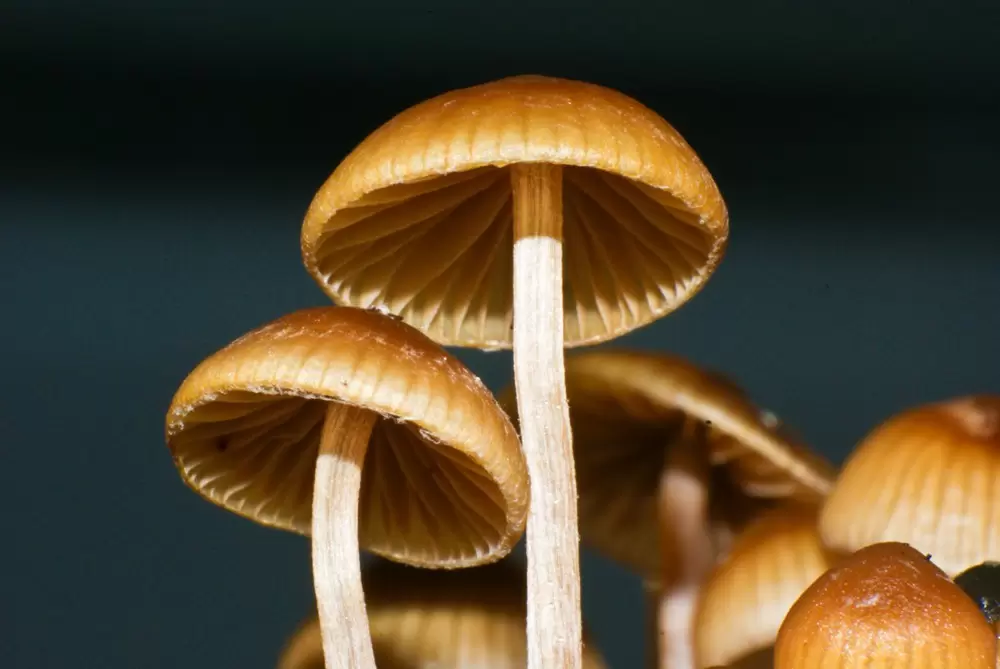
In the 1960s and 1970s, during the height of the counterculture movement, Psilocybe Cyanescens Wavy Cap Spore Print gained notoriety as a popular “magic mushroom” among psychedelic enthusiasts. Its potent psilocybin content and distinctive wavy caps made it a sought-after species, particularly on the West Coast.
One of the most well-known advocates for P. cyanescens was the late ethnobotanist and author Terence McKenna. In his book “The Food of the Gods,” McKenna praised the unique qualities of the “Wavies,” describing them as “the real mushroom of the gods.”
However, this increased popularity also led to growing concerns among authorities, and in 1970, psilocybin and psilocyn (the active compounds in P. cyanescens) were classified as Schedule I controlled substances under the Controlled Substances Act.
Modern Research and Decriminalization Efforts
Despite its legal status, interest in Psilocybe Cyanescens Wavy Cap Spore Print has persisted, particularly in the realm of scientific research. In recent years, there has been a resurgence of studies exploring the potential therapeutic applications of psilocybin for conditions such as depression, anxiety, and addiction.
The ongoing decriminalization and legalization efforts for psilocybin mushrooms in certain states and cities have reignited discussions around the responsible use and cultural significance of P. cyanescens.
For example, in Oregon, where psilocybin was legalized for therapeutic use in 2020, there has been a growing interest in cultivating and studying P. cyanescens for its potential therapeutic benefits.
As the legal landscape continues to evolve, it’s essential to stay informed about the latest developments and to approach the subject of P. cyanescens with respect for its cultural traditions, adherence to legal guidelines, and a commitment to responsible and ethical practices.
Understanding Spore Prints
Spore prints are a crucial tool for mushroom identification and cultivation. They are essentially deposits of spores collected from the underside of a mushroom cap, which can reveal valuable information about the species.
To create a spore print, you’ll need:
- A fresh, mature mushroom specimen
- A clean surface (glass, aluminum foil, or paper)
- A container or bowl to cover the mushroom
Here’s the step-by-step process:
- Carefully remove the stem from the mushroom cap.
- Place the cap gill-side down on the clean surface.
- Cover the cap with the container or bowl, creating a contained environment.
- Leave the setup undisturbed for several hours (ideally 12-24 hours).
- After the designated time, remove the cap to reveal the spore print pattern.
Spore prints are invaluable for identifying mushroom species, as different species produce distinct spore colors and patterns. They are also essential for cultivating mushrooms, as spores are the reproductive units required for successful growth.
Psilocybe Cyanescens Spore Print Identification
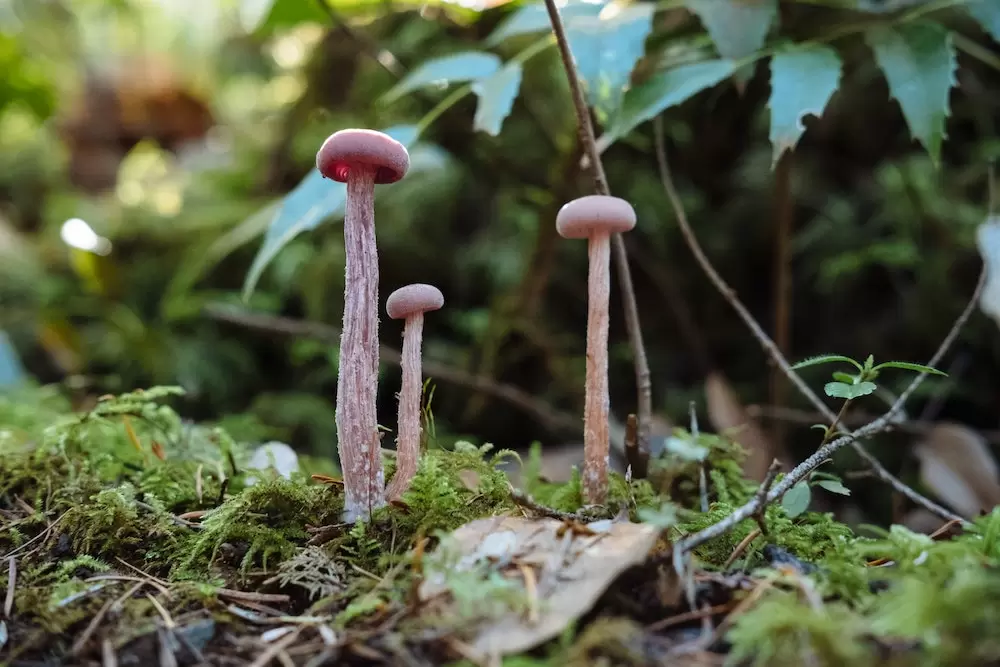
The spore print of Psilocybe Cyanescens Wavy Cap Spore Print is a striking deep purple-brown to violet-black color, with a distinct linear pattern reflecting the gills of the mushroom cap. This unique color and pattern combination can help distinguish it from look-alike species, such as the Psilocybe azurescens or Psilocybe serbica.
Here’s a visual comparison of P. cyanescens spore prints alongside some common look-alikes:
| Species | Spore Print Color | Spore Print Pattern |
| Psilocybe cyanescens | Deep purple-brown to violet-black | Linear, reflecting gills |
| Psilocybe azurescens | Dark purple-brown | Linear, reflecting gills |
| Psilocybe serbica | Dark brown to purple-brown | Linear, reflecting gills |
| Psilocybe cubensis | Deep purple-brown to black | Irregular, mottled |
As you can see, while the spore print colors may appear similar, the distinct linear pattern of P. cyanescens sets it apart from other species, particularly the more irregularly mottled patterns of Psilocybe cubensis.
It’s crucial to cross-reference spore print characteristics with other identifying features, such as cap shape, gill attachment, and habitat, to ensure accurate identification.
Legal Status of P. Cyanescens in the USA
The legal status of psilocybin mushrooms, including Psilocybe Cyanescens Wavy Cap Spore Print, varies across the United States. At the federal level, psilocybin is classified as a Schedule I controlled substance under the Controlled Substances Act, making its possession, cultivation, and distribution illegal.
However, several states and cities have decriminalized or legalized psilocybin for specific purposes, such as:
- Oregon: Psilocybin mushrooms were legalized for therapeutic use in supervised settings in 2020.
- Colorado: Psilocybin and psilocyn were decriminalized in 2022 for personal use and possession.
- Washington, D.C.: Psilocybin and psilocyn were decriminalized in 2021 for personal use and possession.
It’s essential to stay informed about the constantly evolving legal landscape surrounding psilocybin mushrooms in your specific state or locality. Consult reputable sources, such as government websites or legal professionals, to ensure compliance with current regulations.
It’s crucial to approach the subject of psilocybin mushrooms with responsibility and ethical consideration. While there may be potential therapeutic benefits and cultural traditions associated with their use, it’s essential to prioritize safety, informed decision-making, and respect for the law.
Legal Status of P. Cyanescens in the USA
The legal status of Psilocybe Cyanescens Wavy Cap Spore Print and other psilocybin-containing mushrooms is a complex and evolving topic in the United States. While psilocybin is currently classified as a Schedule I controlled substance at the federal level, several states and cities have taken steps to decriminalize or legalize its use for specific purposes.
Federal Laws
Under the Controlled Substances Act (CSA), psilocybin and psilocyn (the active compounds found in P. cyanescens) are classified as Schedule I substances, which are defined as having a high potential for abuse and no currently accepted medical use. This classification makes the cultivation, possession, and distribution of P. cyanescens and other psilocybin mushrooms illegal under federal law.
However, it’s important to note that the legal landscape surrounding psilocybin is changing rapidly, and there have been ongoing efforts to reschedule or remove it from the CSA altogether.
You can aslo read about tidal-wave-mushroom
State and Local Laws
Despite the federal prohibition, several states and cities have taken steps to decriminalize or legalize psilocybin for specific purposes, such as therapeutic use or personal possession.
Here are some notable examples:
- Oregon: In November 2020, Oregon became the first state to legalize the supervised use of psilocybin for therapeutic purposes. The Oregon Psilocybin Services Act (Measure 109) allows for the administration of psilocybin in licensed facilities by trained facilitators.
- Colorado: In November 2022, Colorado voters approved Proposition 122, which decriminalized the personal use and possession of certain psychedelic substances, including psilocybin mushrooms, for individuals aged 21 and older.
- Washington, D.C.: In November 2020, Washington D.C. voters approved Initiative 81, which decriminalized the cultivation, possession, and use of psilocybin mushrooms by adults aged 21 and older.
- California: While psilocybin remains illegal at the state level, several cities, including Oakland, Santa Cruz, and Arcata, have decriminalized or deprioritized the enforcement of laws related to the personal use and possession of psilocybin mushrooms.
It’s important to note that these state and local laws do not legalize the commercial sale or distribution of psilocybin mushrooms, and federal laws still apply. The legal status can vary significantly between jurisdictions, so it’s essential to research and understand the specific laws in your area.
Research and Therapeutic Use
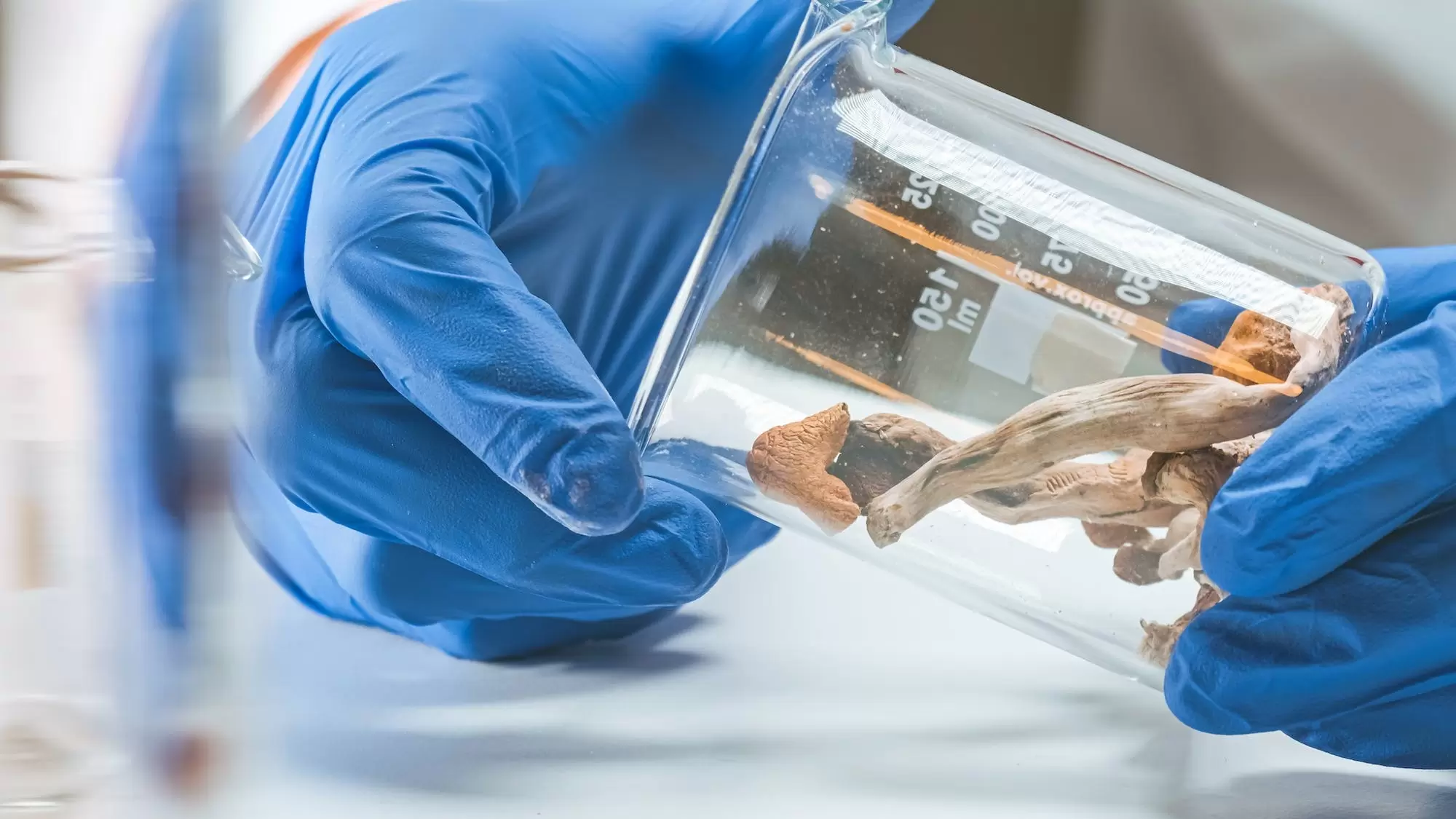
Despite the legal restrictions, there has been a growing interest in researching the potential therapeutic applications of psilocybin, particularly for mental health conditions such as depression, anxiety, and addiction.
Several universities and research institutions, including Johns Hopkins University, Imperial College London, and the University of California, Los Angeles (UCLA), have been conducting clinical trials and studies on the use of psilocybin in controlled settings.
While these research efforts are still in relatively early stages, they have shown promising results and have contributed to the ongoing discussions around the potential medical benefits of psilocybin and the need for further research and legal reform.
As the legal landscape surrounding Psilocybe cyanescens and other psilocybin mushrooms continues to evolve, it’s crucial to stay informed about the latest developments and to approach the subject with respect for the law, responsible practices, and a commitment to ethical and informed decision-making.
Responsible Use and Ethical Considerations
While psilocybin mushrooms have been used in various cultural and therapeutic contexts, it’s essential to approach their use with caution and responsible practices. Potential risks associated with psilocybin include:
- Psychological distress or anxiety
- Increased heart rate and blood pressure
- Nausea and vomiting
- Impaired judgment and decision-making
It’s crucial to prioritize safety by ensuring proper dosing, a safe and comfortable environment, and the presence of a sober guide or “trip sitter” if needed.
There are ongoing research efforts exploring the therapeutic potential of psilocybin for conditions such as:
- Treatment-resistant depression
- Anxiety disorders
- Addiction recovery
- End-of-life distress
While promising, these studies are still in relatively early stages, and more research is needed to fully understand the risks and benefits.
Ultimately, the decision to use psilocybin mushrooms should be approached with careful consideration, respect for cultural traditions, and adherence to legal and ethical guidelines.
Conclusion
The captivating world of Psilocybe Cyanescens Wavy Cap Spore Print offers a fascinating glimpse into the rich diversity of mushroom species. From their distinctive deep purple-brown color to their linear, gill-reflecting patterns, these spore prints serve as a valuable tool for identification and cultivation.
As we’ve explored, proper identification is crucial to avoid potentially dangerous misidentifications, and knowledge of the legal status in your area is essential for responsible use. The ethical considerations surrounding psilocybin mushrooms highlight the importance of informed decision-making and respect for cultural traditions.
Whether you’re a seasoned mycologist, a curious nature enthusiast, or simply intrigued by the world of fungi, understanding the intricate details of Psilocybe Cyanescens Wavy Cap Spore Print spore prints can deepen your appreciation for these remarkable organisms. Continue to explore, learn, and approach this subject with reverence for the natural world and a commitment to responsible practices.
FAQ’s
What is the difference between Galerina and Psilocybe spore print?
Galerina spore prints are typically rusty brown to cinnamon brown, while Psilocybe spore prints are usually dark purplish brown to black.
Where does cyanescens grow?
Cyanescens typically grow in wood chips, mulch, or sandy soils in temperate regions.
What are the look alike species of subaeruginosa?
Look-alike species of subaeruginosa include species of Cortinarius and Hypholoma.
What is the purpose of a spore print?
The purpose of a spore print is to aid in the identification of mushrooms by examining the color and pattern of the spores.
How do you identify a mushroom spore print?
To identify a mushroom spore print, place the cap of the mushroom, gill-side down, on a piece of paper or glass and allow the spores to drop. Then observe the color and pattern of the spores left on the surface.
